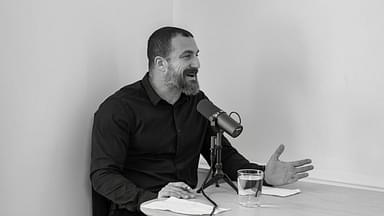Willpower has often been a subject of debate when it comes to performing tasks surrounding physical well-being. Neuroscientist Dr. Andrew Huberman had previously talked to ex-Navy SEAL David Goggins about how the phenomenon worked. Now, in a recent Q&A session in Melbourne, he laid down the research behind the effects of willpower on an individual’s brain.
Stanford’s Dr. Josef Parvizi experimented on the will to persevere through electric stimulations to the brain. He found out that an individual’s ability to overcome challenges affects their anterior mid-singulate cortex. This meant that any challenging task would directly affect a particular part of the brain, getting it active and running.
Dr. Huberman elaborated on the study, explaining its workings. Although we know, through research, that a particular part of the human brain gets active under tough external circumstances, its significance and impact hold more importance in this study.
The anterior mid-singulate cortex is the hub of the brain. It controls the input from various body parts to the brain, and vice-versa, it accesses dopamine and norepinephrine circuits, it holds control over memory and context, etc. Therefore, not only is the part buzzing with activity but it also directly and indirectly affects a lot of processes.
View this post on Instagram
“Everything in the research data now point to the idea that the anterior mid singulate cortex is the seat of so-called will power, which is linked to concepts like tenacity or grit.”
Something that Dr. Huberman highlighted in his talk was the plasticity of the brain part. This phenomenon meant that it could both be improved or reversed, depending on the situation. Since the anterior mid-singulate cortex showcases plasticity, it was modifiable by experience.
“It seems that when we don’t engage in challenges…it doesn’t atrophy but it undergoes sort of a downshift in activation.”
This situation means that if an individual performs activities that aren’t particularly challenging, it leads to the slowing down of that brain part. While it doesn’t cause the degeneration of the anterior mid-singulate cortex, it negatively affects it.
Dr. Andrew Huberman links the experiment to dementia
Elaborating on the experiment further in the talk, Dr. Huberman brought up the topic of ‘super-agers’. These individuals scientifically age slowly compared to others due to their anterior mid-singulate cortex being hyperactive. This phenomenon not only helps them mentally fight diseases like cancer but also adds another perspective to their condition.
The neuroscientist highlighted their perseverance through age and medical conditions. If the part of the brain that deals with willpower is hyperactive even in their senior years, he established that there must be a connection between brain activity and the will to live.





